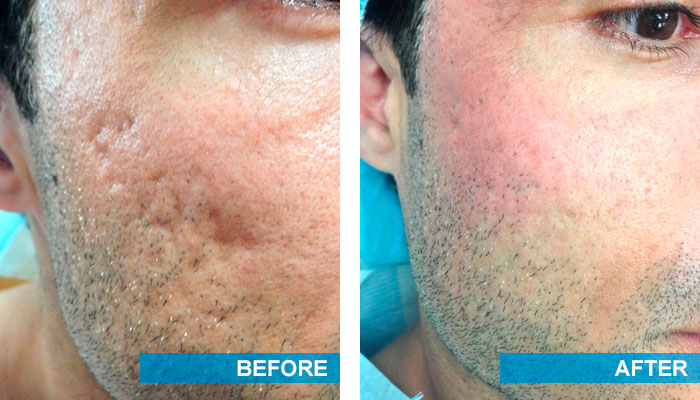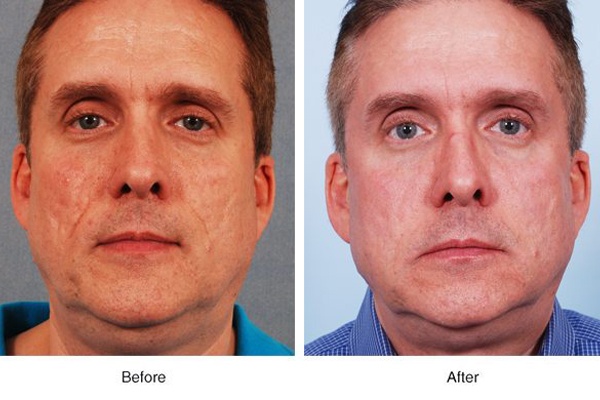Discovering Skin Disease: Determining and Treating Acne Scars for Healthier Skin
Acne scars represent a considerable concern for people seeking to keep healthy skin, as they can influence both appearance and self-worth. Understanding the numerous types of scars, from atrophic to hypertrophic, is necessary for establishing ideal therapy choices. While specialist treatments like chemical peels and microneedling can be effective, the relevance of individualized treatment strategies can not be overemphasized. Preventative steps play an essential duty in decreasing future scarring. As we discover these aspects, one must think about just how the ideal strategy can cause transformative results.
Understanding Acne Scars

The body's all-natural healing process can cause either atrophic scars, which appear as clinical depressions in the skin, or hypertrophic scars, which are increased and arise from overflow of collagen. Additionally, the emotional toll of acne marks ought to not be taken too lightly; numerous people report sensations of embarrassment, anxiousness, and decreased self-confidence. This emotional burden can influence social interactions and overall lifestyle.
Addressing acne marks requires a comprehensive understanding of their development and influence. Awareness of the capacity for long-term consequences connected with unattended marks can encourage people to seek suitable therapies. Early treatment and reliable administration methods can significantly enhance skin look and improve emotional strength, emphasizing the significance of understanding the complexities surrounding acne marks.
Kinds of Acne Scars
Acne marks can be categorized into distinctive types, each showing distinct qualities and calling for certain treatment strategies. acne scars. The main sorts of acne scars consist of atrophic, hypertrophic, and keloid scars

Hypertrophic scars, on the other hand, are elevated over the skin degree and are the outcome of extreme collagen manufacturing throughout the healing procedure. They generally stay within the boundaries of the initial acne sore. Keloid marks are comparable however prolong beyond the initial injury site, forming bigger, elevated locations that can be itchy or excruciating.
Recognizing these sorts of scars is necessary for picking appropriate treatment choices. Various marks may respond much better to details therapies, such as laser treatments, fillers, or surgical interventions, stressing the significance of a tailored strategy to acne mark management.
Determining Your Scars
When assessing the appearance of your skin, it is essential to properly determine the sort of scars existing, as this will inform one of the most efficient treatment approach. Acne marks typically fall under two categories: hypertrophic and atrophic marks. Atrophic scars, which are one of the most common, look like depressions or imprints on the skin. These can further be categorized right into ice-pick scars, boxcar scars, and rolling marks, each exhibiting distinctive characteristics and needing various techniques for assessment.
Hypertrophic marks, on the various other hand, are increased and occur because of excessive collagen manufacturing throughout the recovery procedure. Identifying the certain attributes of more info here your scars-- such as deepness, appearance, and width-- is crucial for appropriate recognition (acne and acne scars treatment). In addition, think about the distribution of marks throughout your skin, as this can show the seriousness and duration of the acne condition
Engaging with a skin doctor can offer important understandings right into the nature of your marks, aiding in the differentiation in between different kinds. A thorough understanding of your marks will eventually result in a much more customized and reliable treatment plan, guaranteeing a clearer and much healthier skin.
Treatment Choices Available
Identifying the details sort of acne marks present on your skin lays the foundation for checking out effective therapy options. Typical kinds of acne marks consist of atrophic (clinically depressed), hypertrophic (elevated), and post-inflammatory erythema.
For atrophic marks, choices such as chemical peels, microneedling, and laser resurfacing are widely made use of. Chemical peels off utilize acids to get rid of the outer layer of skin, promoting brand-new cell growth. Microneedling entails small needles that create micro-injuries, boosting collagen production. Laser resurfacing targets damaged skin cells, enhancing texture and tone.
Hypertrophic marks can be treated with corticosteroid shots to squash the scar or laser therapy to decrease redness and boost look. Silicone gel sheets and pressure dressings may additionally aid in handling raised marks.
Furthermore, facial fillers can temporarily complete clinical depressions from atrophic scars, while medical excision might be suitable for severe instances. Each treatment option has its advantages and considerations, making it important to seek advice from a skin doctor. They can offer tailored suggestions based upon the type and extent of your scars, along with your skin type linked here and general health.
Tips for Avoidance
Efficient avoidance methods can substantially reduce the probability of developing acne marks. The very first step is to keep a consistent skin care regimen that includes gentle cleaning, exfoliation, and hydrating. Utilizing non-comedogenic products assists prevent stopped up pores, which can exacerbate acne. Furthermore, including topical treatments having salicylic acid or benzoyl peroxide can properly lessen and handle breakouts swelling.
Staying clear of the impulse to select or stand out acne lesions is important, as this can lead to much deeper skin damages and increase the risk of scarring. Rather, consider utilizing a cold compress or non-prescription treatments to decrease swelling and inflammation.
Sun security is one more essential aspect of avoidance; ultraviolet (UV) rays can darken marks and prevent the healing process. Applying a broad-spectrum sunscreen with at least SPF 30 daily can shield the skin and advertise even healing.
Last but not least, keeping a well balanced diet regimen abundant in antioxidants, vitamins, and minerals sustains skin wellness and recovery. Remaining moisturized and handling stress and anxiety degrees can likewise play a considerable role in decreasing acne flare-ups. By implementing these approaches, individuals can significantly minimize their chances of creating acne scars.
Verdict
In conclusion, understanding and recognizing acne marks is vital for effective treatment and attaining healthier skin. Numerous types of acne scars, consisting of atrophic and hypertrophic marks, necessitate details interventions customized to individual requirements. Therapy options variety from chemical peels and microneedling to corticosteroid shots, stressing the significance of consulting a skin specialist. In addition, embracing a gentle skincare routine and protecting the skin from UV exposure can significantly contribute to the avoidance of more scarring and overall skin health and wellness.
The body's natural healing process can result in either atrophic marks, which click reference show up as depressions in the skin, or hypertrophic scars, which are increased and result from overflow of collagen. They are more divided into 3 subtypes: ice choice marks, boxcar marks, and rolling marks. Acne marks typically drop into 2 groups: atrophic and hypertrophic marks. These can better be classified into ice-pick marks, boxcar marks, and rolling scars, each displaying unique characteristics and requiring different strategies for assessment.
Different types of acne scars, including hypertrophic and atrophic scars, demand specific interventions tailored to individual requirements.
Comments on “Targeted Acne Scars Treatment: Accomplish Smooth, Even Skin Tone”